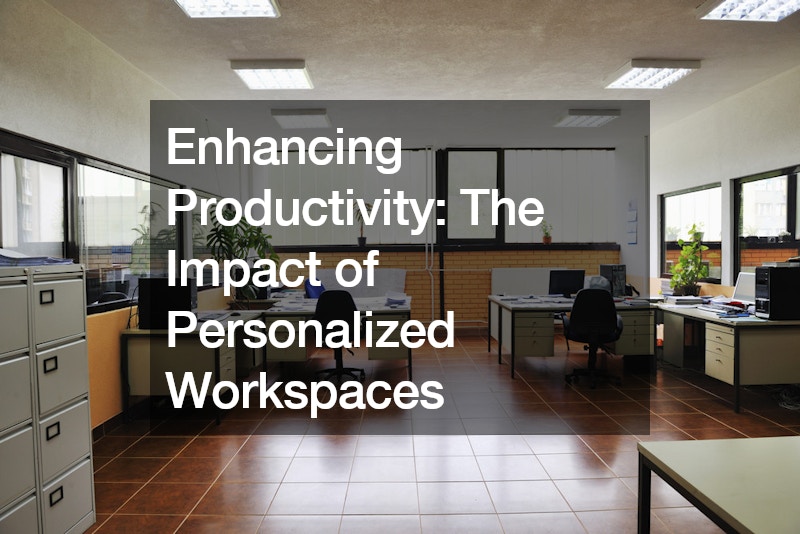In today’s fast-paced work environment, maximizing employee productivity is a top priority for businesses. Companies invest in training programs, cutting-edge technology, and ergonomic furniture, all in an effort to create an environment that fosters efficiency and innovation. However, a recent study highlights a surprisingly simple, yet often overlooked, factor that can significantly impact worker output: personalized workspaces.
For decades, the concept of the “lean office” dominated workplace design. This philosophy emphasized standardized, minimalist work areas, devoid of personal items, with the belief that a clutter-free environment would lead to increased focus and productivity.
However, research has begun to challenge this notion, suggesting that a one-size-fits-all approach may not be ideal for everyone.
A study conducted by a British professor explored the link between workspace design and worker performance. The study divided participants into three groups. The first group worked in a lean office environment, stripped of any personal touches. The second group worked in a standardized space, but with the addition of plants and artwork. The final group was given the opportunity to personalize their workspaces, selecting photos, plants, and other items to create their ideal work environment.
The results were clear: personalization yielded the most significant boost in productivity. Workers in the personalized space demonstrated a remarkable 30% increase in productivity compared to those in the lean office environment. Even the standardized space with basic enhancements like plants and artwork saw a 15% increase in productivity over the lean setup.
These findings suggest that a more human-centered approach to workspace design can have a profound impact on worker well-being and output. By allowing employees to personalize their work areas, companies can foster a sense of ownership and control, leading to increased engagement and motivation. A personalized workspace becomes an extension of an employee’s individuality, reflecting their personality and preferences. This sense of connection to their physical environment can contribute to a more positive work experience, ultimately leading to improved performance.
Beyond the productivity gains, personalized workspaces offer a range of additional benefits for both employees and businesses. Studies have shown that personalization can lead to:
- Reduced stress and anxiety: A workspace that reflects an employee’s preferences can create a more calming and inviting environment, leading to reduced stress levels and improved mental well-being. This, in turn, can contribute to increased focus and better decision-making.
- Enhanced creativity and innovation: Personalized workspaces can spark inspiration and encourage out-of-the-box thinking. Surrounding oneself with stimulating visuals or personal mementos can promote problem-solving and lead to the development of new ideas.
- Improved employee morale and satisfaction: The ability to personalize their workspace demonstrates to employees that their individuality is valued. This sense of control and autonomy can lead to increased job satisfaction and a stronger sense of loyalty to the company.
Implementing personalized workspaces doesn’t require a complete overhaul of your office layout. Even small changes can make a significant difference. Here are some practical steps businesses can take to empower employees to personalize their work environment:
- Invest in flexible furniture: Consider workstations that allow for some level of configuration, such as adjustable desks or modular furniture systems. This allows employees to tailor their space to suit their preferred working style and physical needs.
- Provide a variety of seating options: Not everyone thrives in a traditional office chair. Offering ergonomic chairs, stools, or even standing desks can cater to different preferences and help employees maintain comfort throughout the day.
- Allow for personal touches: While some companies might have concerns about clutter, establishing clear guidelines around personal items can help maintain a professional atmosphere while allowing employees to add touches that reflect their personality. This could include family photos, motivational quotes, or small plants.
- Embrace the walls: Blank walls can feel sterile and uninspiring. Consider allowing employees to decorate their walls with artwork, photos, or whiteboards for brainstorming sessions. A commercial painting service can also be a great option to create a more vibrant and inspiring workspace.
- Offer flexible working arrangements: Not everyone needs a dedicated desk to be productive. Some employees might prefer to work in quiet corners, collaboration areas, or even outdoors. Providing these options allows employees to choose the environment that best suits their task and working style.
The key takeaway is that a one-size-fits-all approach to workspaces is no longer optimal. By embracing personalization, companies can create a work environment that caters to the diverse needs and preferences of their employees. The resulting boost in productivity, employee satisfaction, and overall well-being can be a significant competitive advantage in today’s job market.
Remember, a happy and comfortable employee is a productive employee. Invest in creating a workspace that reflects your company’s commitment to its people, and watch your business thrive.
.







